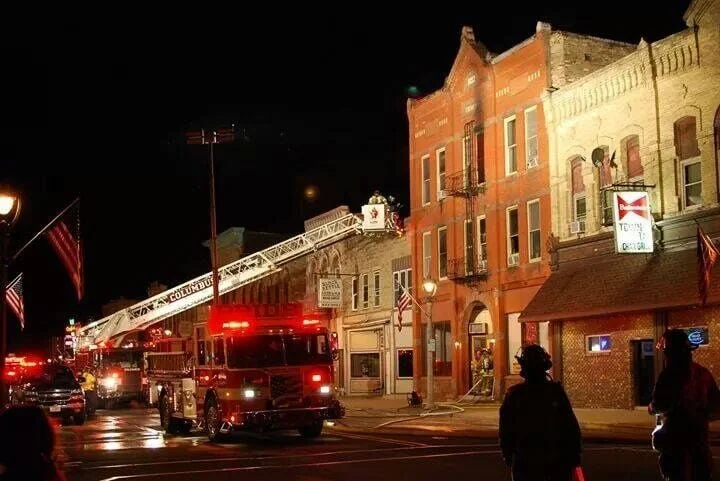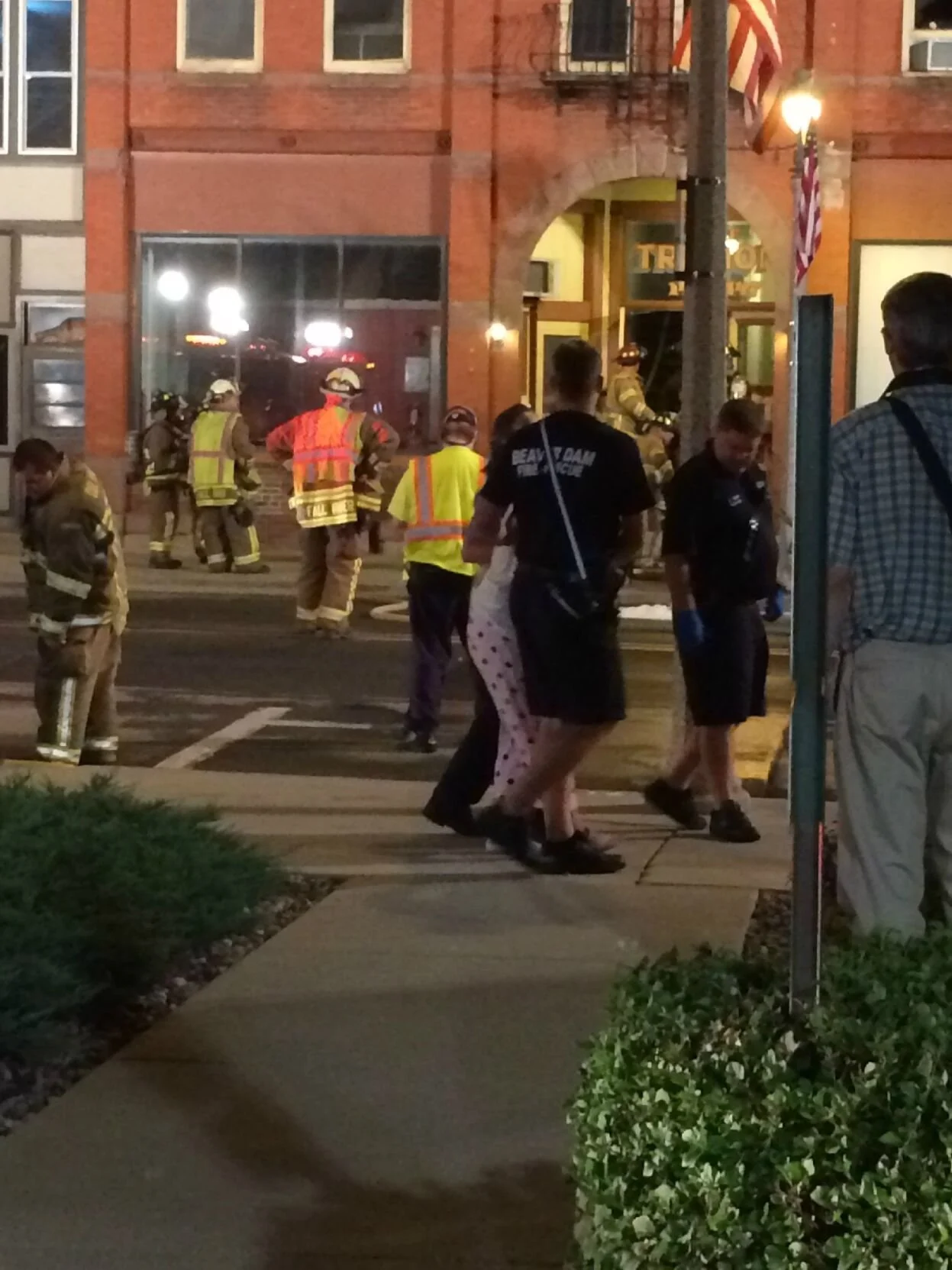⁜
History of the tremoNt
The Tremont Hotel was built in 1892, the same year as the Columbus City Hall. It replaced another hotel (The Farmer’s Hotel) on the same site and was considered one of the finest establishments in the area at the time. The hotel featured 28 guest rooms with a grand restaurant on the ground floor. It was (and still is) a short walk from Columbus’s train station, providing a well-appointed stop for traveling merchants and salesmen. The hotel was originally connected to its neighbor at 153 N Ludington, providing its guests access to a local saloon.
The building was constructed in the Romanesque Revival style with a round, arched entry, ornamental brick work on its cornice, and a gable-shaped parapet. Many historic brick structures in south-central Wisconsin are constructed with light-colored “Cream City” brick, but the Tremont stands out due to its red brick construction.
Many hotels of this style fell out of favor as travelers came to desire the private bathrooms we are all now accustomed to as opposed to the shared bathrooms common at the time of The Tremont’s construction. We are still uncovering many aspects of the Tremont’s history, but what we do know is that in the early 1990s, the building was purchased by a local couple. At the time, it served as low-income housing in the city, still featuring communal bathrooms and a large number of rooms for rent. On September 9, 2014, a fire broke out at the second floor of The Tremont due to a compressed electrical cord beneath a piece of furniture. Luckily, the Columbus Fire Department was training that very night and responded to the fire almost immediately. In spite of the good fortune, the fire rendered the building uninhabitable.
In 2016, plans were drawn up for the building’s rehabilitation including an elevator, stair tower, new footers in the basement, and a complex steel support structure. Due to a series of unfortunate and unforeseen circumstances, the building’s rehabilitation was never completed. The new footers were poured, the steel support structure and a new roof were installed, but that is where the work ended sometime in 2016. The building was vacant until we purchased it in January 2025.
If you have more to add, please contact us, we would love to fill in the blank spots in this building’s history!



